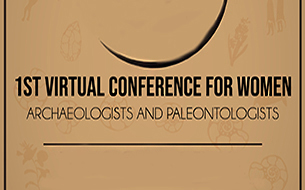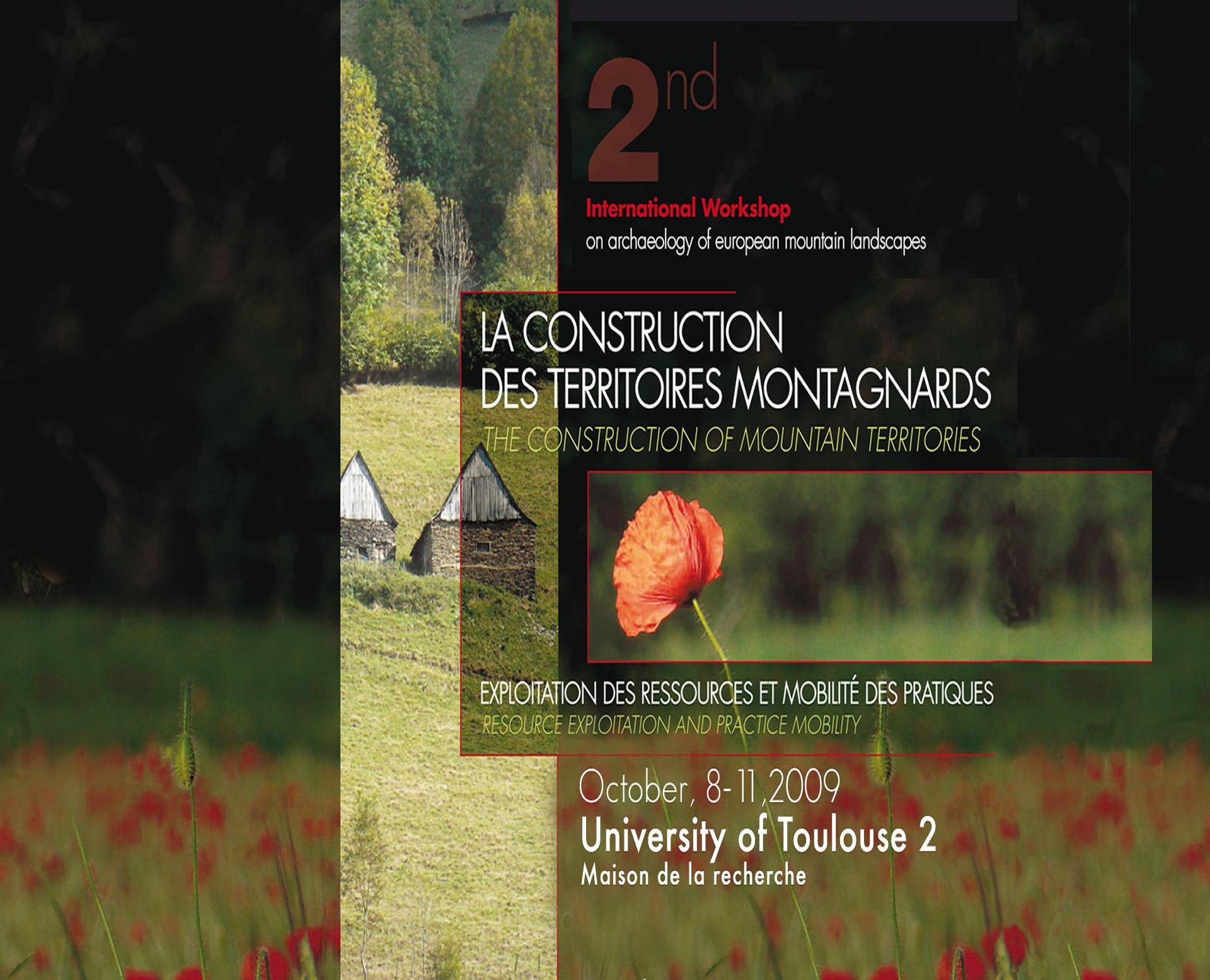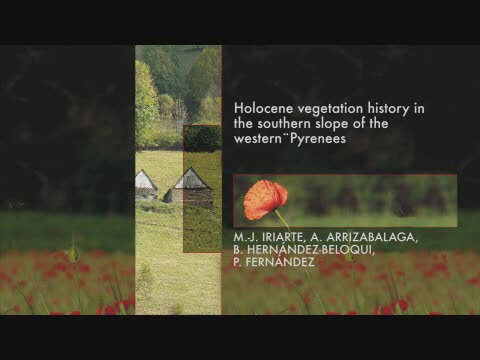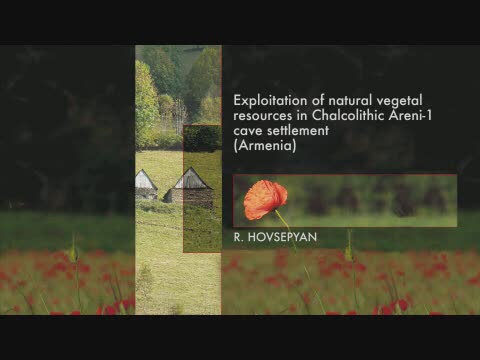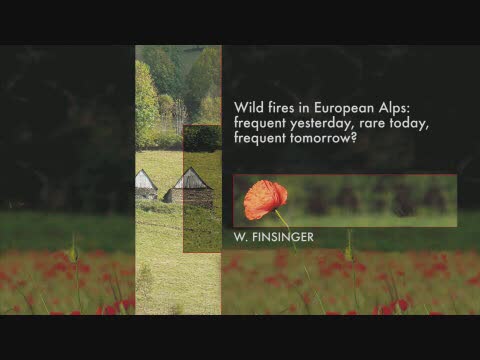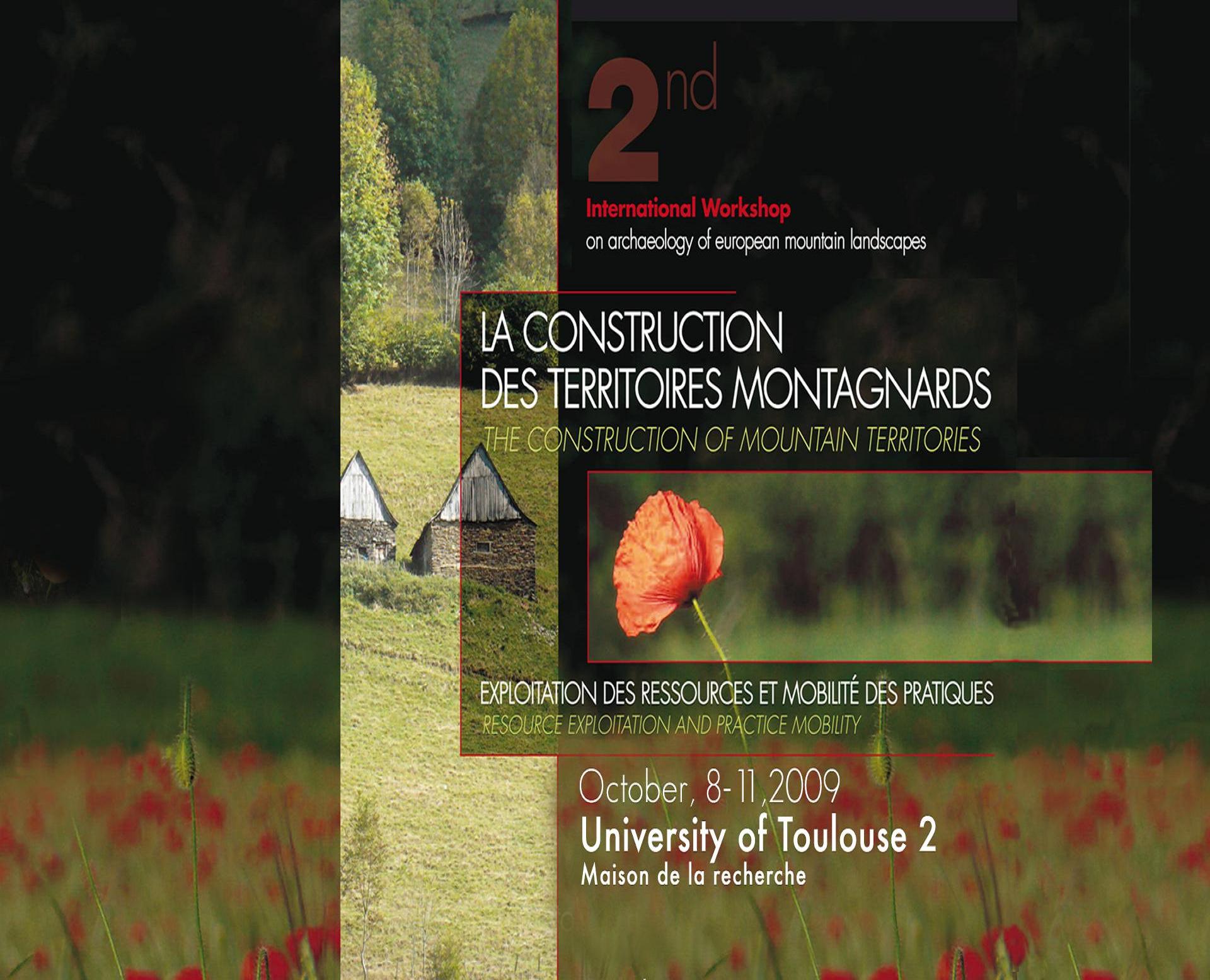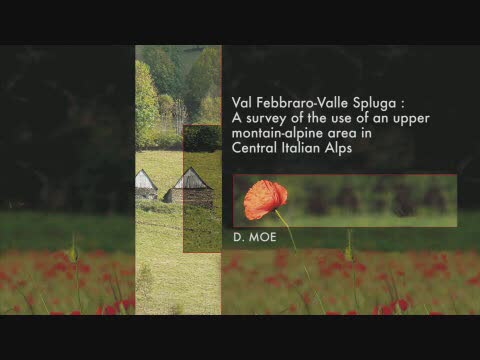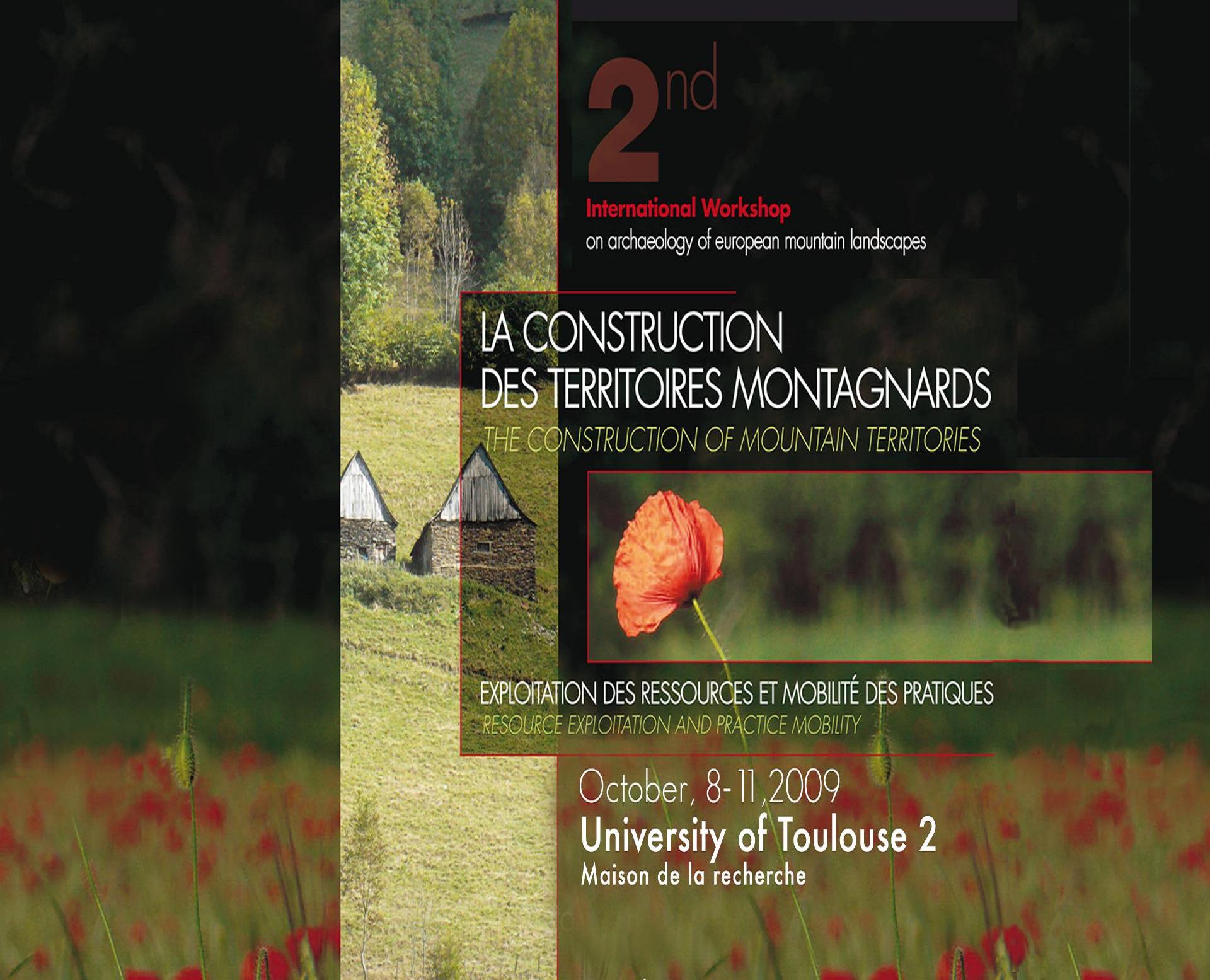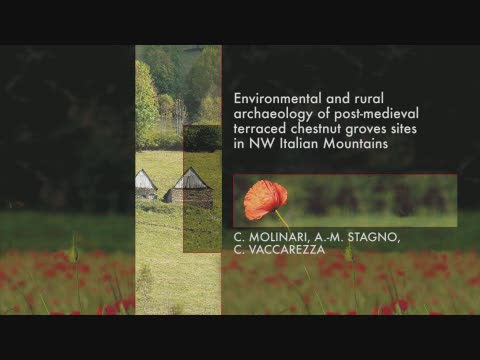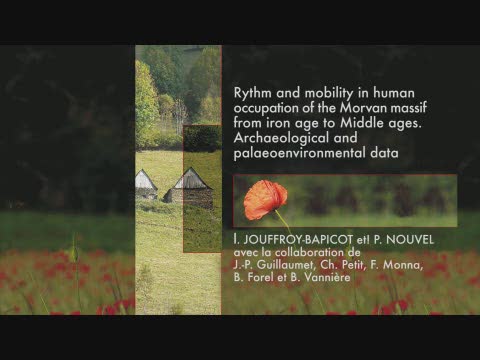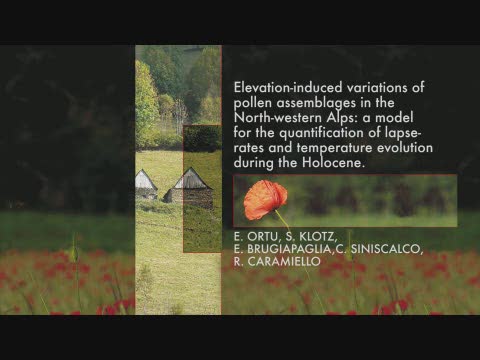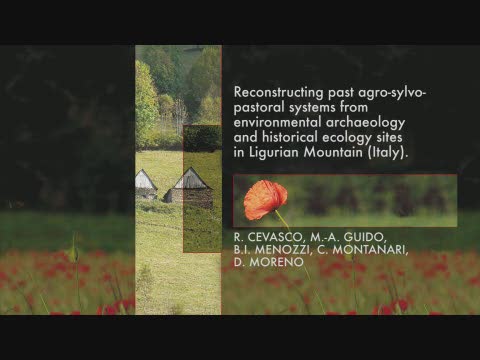Notice
The middle triassic palaeoflora of monte Prà della Vacca / Kühwiesenkopf (NE Italy)-new investigations / Giuseppa Forte
- document 1 document 2 document 3
- niveau 1 niveau 2 niveau 3
Descriptif
The middle triassic palaeoflora of monte Prà della Vacca / Kühwiesenkopf (NE Italy)-new investigations / Giuseppa Forte, in colloque "1st Virtual Conference for Women Archaeologists and Paleontologists. Nouveaux apports à l’étude des populations et environnements passés" organisé par le laboratoire Travaux et Recherches Archéologiques sur les Cultures, les Espaces et les Sociétés (TRACES) de l’Université Toulouse Jean Jaurès et le laboratoire Paléontologie Évolution Paléoécosystèmes (PALEVOPRIM) de l'Université de Poitiers, sous la responsabilité scientifique de Julie Bachellerie, Ana Belén Galán López (Traces), Émilie Berlioz et Margot Louail (Palevoprim). Université Toulouse Jean Jaurès, 8-9 mars 2021. [Conférence enregistrée à distance].
Session 4 : Paleoclimates andenvironmental changes.
The Triassic locality of Monte Prà della Vacca/Kühwiesenkopf (MPdV), in the Northern Dolomites (NE Italy), is considered a Fossillagerstätte for its richness and good preservation of its fossils, and represents one of the best witnesses of the biotic recovery after the end-Permian mass extinction. The paleontological assemblage includes marine and terrestrial fauna and flora, which permitted to reconstruct both marine and terrestrial middle-late Anisian (Middle Triassic) environments dating back to around 245 million years ago. Plant fossils occur in lens-shaped siltstone layers, which alternate with silty and marly limestone layers and represent rapid burial events caused by submarine flows within a marine basin, triggered by heavy storms. The terrestrial plant assemblage is very diverse and is well-documented by the rich macrofossil plant collection, stored at the Museum of Nature South Tyrol in Bozen/Bolzano: ca. 1200 specimens of leaves, branches, trunks, cones, and seeds of at least 36 different species and 29 genera, including lycopods, horsetails, ferns, seed ferns, cycads, and conifers.
The MPdV flora corresponds with a local shift to more humid conditions during the otherwise arid Middle Triassic. This makes the flora of MPdV an ideal candidate for an integrated palaeobotanical, geochemical and palaeoclimatic study. We performed taxon-specific geochemical analyses on the organic carbon collected from plant fossils belonging from different taxa, providing insights on the isotopic composition of different groups of plants. A wide isotopic variability was observed in conifers, cycads and lycopods, while low variability was observed in ferns. The review of the palaeobotanical collection led to the discovery of one of the oldest records of amber worldwide. Moreover, the comparison between Triassic amber occurrences and humid episodes suggests some close causal-effect relationship between the two.
Thème
Documentation
Références documentaires
FORTE, Giuseppa (2018). An Integrated Study on Late Cisuralian (Early Permian) Palaeoenvironments and Palaeoclimate of Southern Alps. Ph.D. thesis, University of Padua, (Italy), 135 p. [En ligne : http://paduaresearch.cab.unipd.it/10833/1/Forte_Giuseppa_tesi.pdf].
FORTE, Giuseppa, KUSTATSCHER, Evelyn, LOOY, Cindy V. et al. (2017). Conifer diversity in the Kungurian of Europ. Evidence from dwarf-shoot morphology, Review of Palaeobotany and Palynology, 244, 308-315.
Liens
Programme du colloque "1st Virtual Conference for Women Archaeologists and Paleontologists" (8-9 mars 2021)
Website du Laboratoire Paléontologie Évolution Paléoécosystèmes Paléoprimatologie (PALEVOPRIM)
Livret des résumés des communications du colloque "1st Virtual Conference for Women Archaeologists and Paleontologists. Nouveaux apports à l’étude des populations et environnements passés" (8-9 mars 2021)
Site internet dédié au colloque "1st Virtual Conference for Women Archaeologists and Paleontologists" (8-9 mars 2021)
Dans la même collection
-
Sensivity analysis to morphological changes of the shoulder joint: application to percussio…
BLASI-TOCCACCELI Alicia
Sensivity analysis to morphological changes of the shoulder joint: application to percussion gestures during Oldowan debitage / Alicia Blasi-Toccacceli, in colloque "1st Virtual Conference for
-
"Ouranopithecus macedoniensis" (late Miocene, Greece): analysis of mandibular fragments using …
IOANNIDOU Melania
Ouranopithecus macedoniensis (late Miocene, Greece): analysis of mandibular fragments using 3D geometric morphometrics / Melania Ioannidou, in colloque "1st Virtual Conference for Women
-
Comminution capabilities of extant and fossil anthropoids during molar intercuspation: a preliminar…
WALKER Axelle E. C.
Comminution capabilities of extant and fossil anthropoids during molar intercuspation: a preliminary experiment using a chewing simulator / Axelle E. C. Walker, in colloque "1st Virtual Conference for
-
New sperm whale cranium from the late Miocene and a revised family attribution for the small crown …
ALFSEN Apolline
New sperm whale cranium from the late Miocene and a revised family attribution for the small crown physeteroid Thalassocetus / Apolline Alfsen, in colloque "1st Virtual Conference for Women
-
What is shaping the brain? A perspective on brain size evolution in carnivorans / Margot…
MICHAUD Margot
What is shaping the brain? A perspective on brain size evolution in carnivorans / Margot Michaud, in colloque "1st Virtual Conference for Women Archaeologists and Paleontologists. Nouveaux
-
Postnatal shape changes in the rodent mandible at a macroevolutionary scale / Morgane Dubied
DUBIED Morgane
Postnatal shape changes in the rodent mandible at a macroevolutionary scale / Morgane Dubied, in colloque "1st Virtual Conference for Women Archaeologists and Paleontologists. Nouveaux apports à l
-
Cranial vault healing in modern humans: input of archaeological and clinical data / Aliéno…
LEPETIT Aliénor
Cranial vault healing in modern humans: input of archaeological and clinical data / Aliénor Lepetit, in colloque "1st Virtual Conference for Women Archaeologists and Paleontologists. Nouveaux
-
A transdisciplinary approach to reconstruct the Nilotic socio-ecosystem in Luxor west bank during t…
NICATORE Giulia
A transdisciplinary approach to reconstruct the Nilotic socio-ecosystem in Luxor west bank during the Ptolemaic period (3rd-1st centuries BC.) / Giulia Nicatore, in colloque "1st Virtual Conference
-
From monoliths to megaliths: a new approach on the megalithic burials of southwestern France / Bosc…
BOSCUS Sarah
From monoliths to megaliths: a new approach on the megalithic burials of southwestern France / Boscus Sarah, in colloque "1st Virtual Conference for Women Archaeologists and Paleontologists. Nouveaux
-
Tracing Human Ancestral Migration from its Symbiotic Bacteria / Alexia Nguyen Trung
NGUYEN TRUNG Alexia
Tracing Human Ancestral Migration from its Symbiotic Bacteria / Alexia Nguyen Trung, in colloque "1st Virtual Conference for Women Archaeologists and Paleontologists. Nouveaux apports à l’étude des
-
Foragers and their symbolic landscape. Understanding the role of rock art in the territoriality of …
JOBARD Léa
Foragers and their symbolic landscape. Understanding the role of rock art in the territoriality of Later Stone Age Matobo populations / Léa Jobard, in colloque "1st Virtual Conference for Women
-
Towards a tracking of past bird seasonal migrations through geological times: what could isotopes t…
DUHAMEL Anaïs
Towards a tracking of past bird seasonal migrations through geological times: what could isotopes tell us? / Anaïs Duhamel, in colloque "1st Virtual Conference for Women Archaeologists and
Sur le même thème
-
Rendez-vous IIIF 360 - Gilles Bertin " Annotate (E-ReColNat), logiciel d'annotation compatible IIIF"
Gilles Bertin ingénieur de recherche au CNAM, présente le logiciel d'annotation "Annotate", compatible IIIF.
-
La construction des territoires montagnards : exploitation des ressources et mobilité des pratiques…
GALOP Didier
The occupation and the exploitation of mountain environments, both during conquest and maximum demographic phases, or on the contrary, during desertification phases, differ in geographical
-
L'évolution végétale holocène sur le versant sud des Pyrénées occidentales / Maria-José Iriarte
IRIARTE María José
L'évolution végétale holocène sur le versant sud des Pyrénées occidentales. Maria José IRIARTE. In "La construction des territoires montagnards : exploitation des ressources et mobilité des pratiques"
-
Exploitation of natural vegetal resources in chalcolithic areni-1 cave (Armenia) / R. Hovsepyan
HOVSEPYAN Roman
Exploitation of natural vegetal resources in chalcolithic areni-1 cave settlement (Armenia). Roman HOVSEPYAN ovsepyan, Roman. In "La construction des territoires montagnards : exploitation des
-
Wildfires in european alps : frequent yesterday, rare today, frequent tomorrow ? / W. Finsinger
FINSINGER Walter
Wildfires in european alps : frequent yesterday, rare today, frequent tomorrow ?. Walter Finsinger. In "La construction des territoires montagnards : exploitation des ressources et mobilité des
-
Plant economy of a seasonally occupied site at high altitude during the Neolithic / Lucie Martin
MARTIN Lucie
Plant economy of a seasonally occupied site at high altitude during the Neolithic : the Rockshelter of l'Aulp du Seuil in the Chartreuse Massif (Saint-Bernard du Touvet, Isère, France) . MARTIN Lucie.
-
A survey of the use of an upper mountain-alpine area in Central Italian Alps / Dagfinn Moe
MOE Dagfinn
Val Febbraro-Valle Spluga : a survey of the use of an upper mountain-alpine area in Central Italian Alps. Dagfinn MOE. In 2eme workshop d'Archéologie du paysage des montagnes européennes "La
-
Mountain farming of Norway : Land use History and Development of cultural Landscapes / Mons Kvamme
KVAMME Mons
Mountain summer farming of Norway : land use History and Development of cultural Landscapes / Mons KVAMME. In "La construction des territoires montagnards : exploitation des ressources et mobilité des
-
Environmental archaeology of post-medieval terraced chestnut groves sites / C. Molinari, AM. Stagno
STAGNO Anna Maria
MOLINARI Chiara
Environmental and rural Archaeology of post-medieval terraced chestnut groves sites in NW Italian Mountains. MOLINARI, Chiara ; STAGNO, Anna-Maria (Laboratorio di Archeologia e Storia Ambientale,
-
Rythmes et mobilité d'occupation dans le massif du Morvan / Isabelle Jouffroy-Bapicot, Pierre Nouvel
NOUVEL Pierre
JOUFFROY-BAPICOT Isabelle
Rythmes et mobilité d'occupation dans le massif du Morvan du premier âge du fer au haut Moyen Age : spatialisation et croisement des données archéologiques et paléoenvironnementales. Isabelle Jouffroy
-
Elevation-induced variations of pollen assemblages in North-Western Alps / Elena Ortu
ORTU Elena
Elevation-induced variations of pollen assemblages in the North-Western Alps : a model for the quantifications of lapse-rates and temperature evolution during the holocene. Elena ORTU. Deuxième
-
Reconstructing past agro-pastoral systems from environmental archaeology in Liguria / B.I. Menozzi
MENOZZI Bruna Ilde
Reconstructing past agro-sylvo-pastoral systems from environmental archaeology and historical ecology sites in Ligurian Mountain (Italy). Menozzi, Bruna Ilde (Université de Gênes). In "La construction


